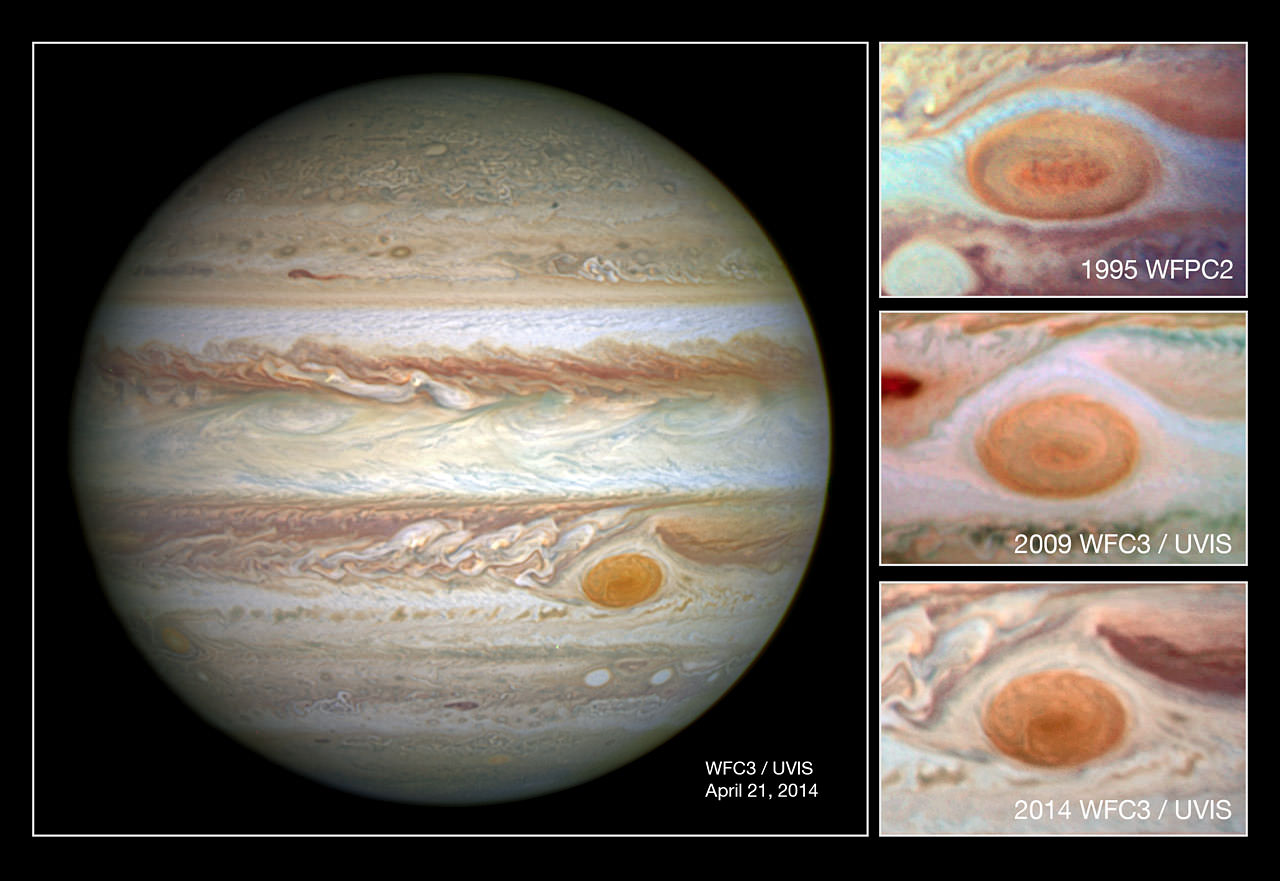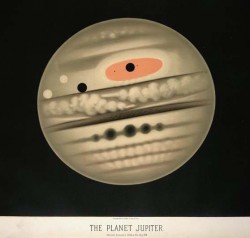

In this comparison image the photo at the top was taken by Hubble's Wide Field Planetary Camera 2 in 1995 and shows the spot at a diameter of just under 21 000km; the second down shows a 2009 WFC3 photo of the spot at a diameter of just under 18 000km; and the lowest shows the newest image from WFC3 taken in 2014 with the spot at its smallest yet, with diameter of just 16 000km. Credit: NASA/ESA
Earlier this year we reported that amateur astronomers had observed and photographed the recent shrinking of Jupiter’s iconic Great Red Spot. Now, astronomers using the Hubble Space Telescope concur:
“Recent Hubble Space Telescope observations confirm that the spot is now just under 10,250 miles (16,500 km) across, the smallest diameter we’ve ever measured,” said Amy Simon of NASA’s Goddard Space Flight Center in Maryland, USA.


Using historic sketches and photos from the late 1800s, astronomers determined the spot’s diameter then at 25,475 miles (41,000 km) across. Even the smallest telescope would have shown it as a huge red hot dog. Amateur observations starting in 2012 revealed a noticeable increase in the spot’s shrinkage rate.
The spot’s “waistline” is getting smaller by just under 620 miles (1,000 km) per year while its north-south extent has changed little. In a word, the spot has downsized and become more circular in shape. Many who’ve attempted to see Jupiter’s signature feature have been frustrated in recent years not only because the spot’s pale color makes it hard to see against adjacent cloud features, but because it’s physically getting smaller.
As to what causing the drastic downsizing, there are no firm answers yet:
“In our new observations it is apparent that very small eddies are feeding into the storm,” said Simon. “We hypothesized that these may be responsible for the accelerated change by altering the internal dynamics of the Great Red Spot.”
A brief primer on Jupiter’s Great Red Spot
The Great Red Spot has been a trademark of the planet for at least 400 years – a giant hurricane-like storm whirling in the planet’s upper cloud tops with a period of 6 days. But as it’s shrunk, its period has likewise grown shorter and now clocks in at about 4 days.
The storm appears to be conserving angular momentum by spinning faster the same way an ice skater spins up when she pulls in her arms. Wind speeds are increasing too, making one wonder whether they’ll ultimately shrink the spot further or bring about its rejuvenation.
Definitely worth keeping an eye on.
In 2015, the United Nations adopted the 2030 Agenda for Sustainable Development—the Sustainable Development Goals…
Astronomers have been battling threats to their clear skies on all fronts lately. One of…
If you were Captain of the first USS Enterprise, where would you go!? Humanity is…
Now is the best time to observe Mars in 2025. Mars from 2014. Credit: Paul…
Scheduled for launch in 2027, the Nancy Grace Roman Telescope is slowly being readied for…
Few places in the solar system are better suited to a balloon than Titan. The…